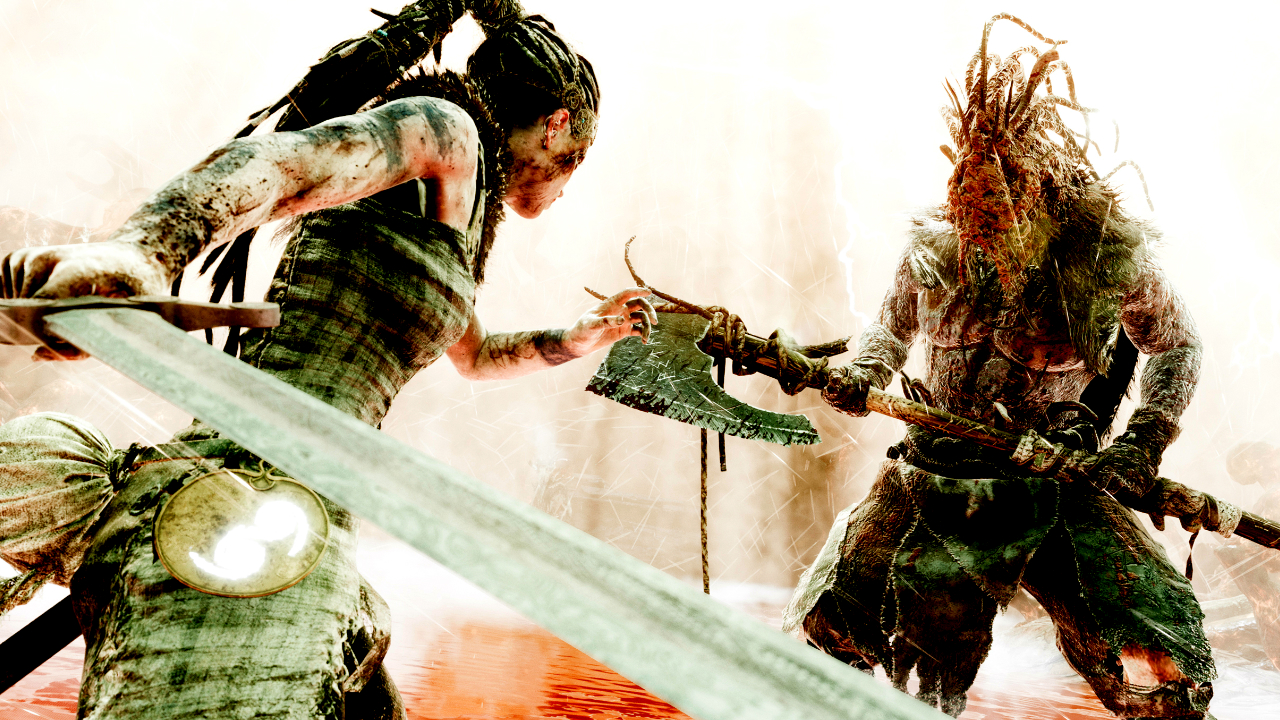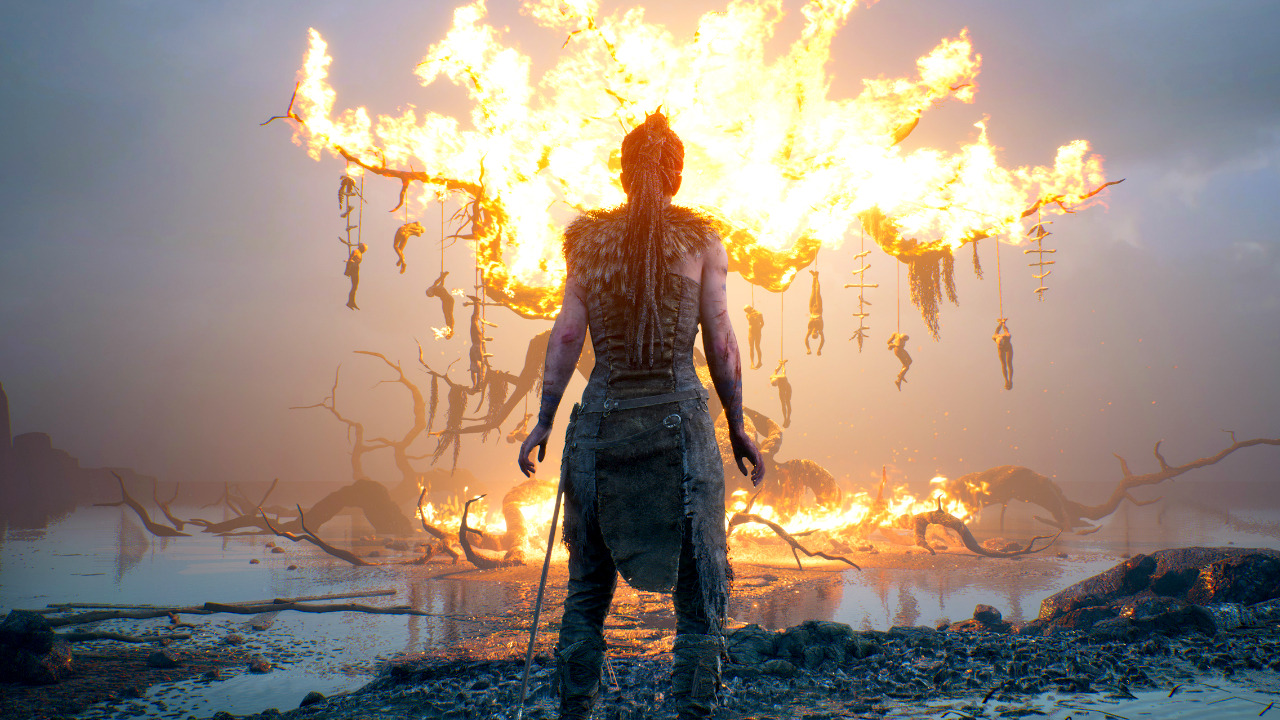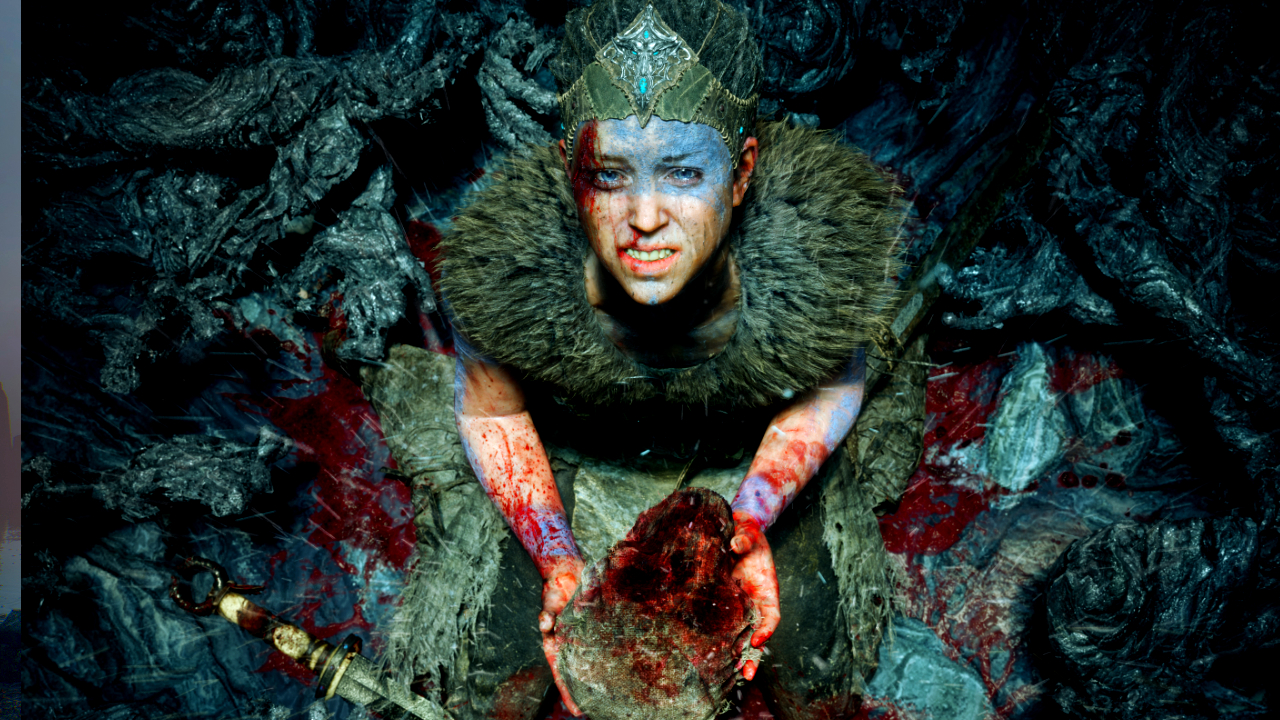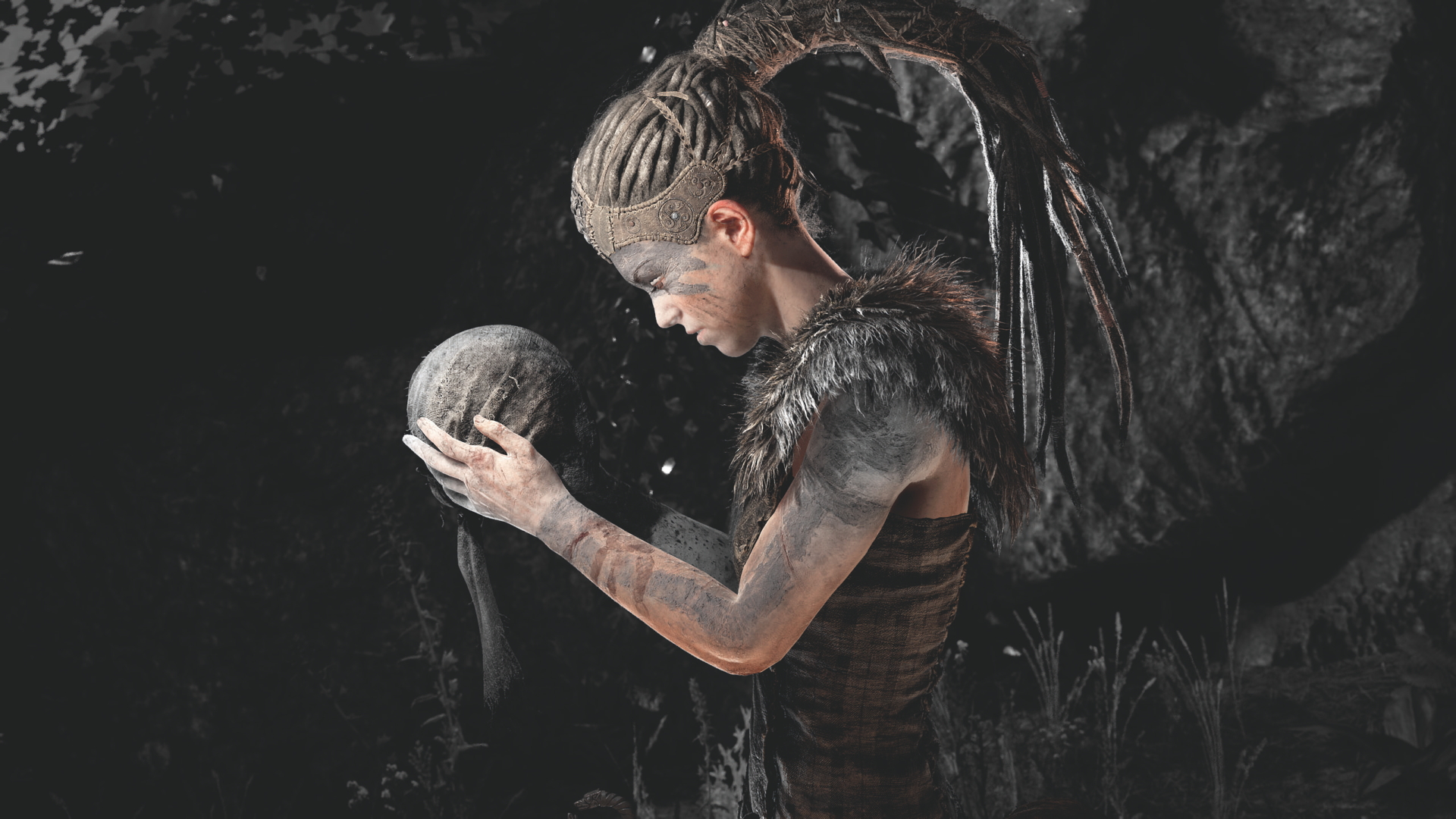Hellblade’s dark portrayal of viking hell and psychosis is this year’s anti-God of War
How Ninja Theory built a dark AAA game with 20 people and some Ikea poles

It takes me all of a few minutes playing Hellblade before I just stop to look around. Ninja Theory’s slashy story about a girl travelling to hell to retrieve her lover's soul looks phenomenal. Even right at the start the misty views of ominous bird-beaked buildings towering over rotting coastlines, and treacherous mountain paths, have provided numerous Share button moments.
On top of that, hero Senua is an alarmingly believable character. Her face all wide eyes as voices whisper and cajole, threaten and placate: a result of the psychosis she suffers. Ninja Theory’s homemade performance capture gives the character an incredible sense of life; almost uncomfortably so when she locks your gaze for a second in a fourth-wall breaking acknowledgment of your presence. You are, after all, just another of the voices hissing in her ear.
It’s all impressive stuff. A dark, narrative driven combat game about madness and loss, hell and vikings, with all the sheen of a AAA production. From an independent studio. Made by 20 people. Using a meeting room they turned into a mocap studio with bits bought from Ikea.
one of that shows though. From the moment Senua’s introduced it feels like a big budget adventure. The story follows her journey through hell to retrieve her lover’s soul after vikings raided her village and killed everyone. It’s built from that mythology - of the nine worlds, places like Niflheim and Jötunheimr, and of gods like Surtr and Valravn. That alone, with its world of twisted trees and mist is interesting enough, but then there’s also the layer of Senua’s madness. It’s a psychosis recreated in game with the help of academics and speaking to people who actually suffer from the condition.
Senua is surrounded by voices constantly that talk about her, but rarely to her. “When we first started we had a good voice and an evil voice,” explains Ninja Theory’s creative director Tameem Antoniades. “In my naivety that’s just how I imagined it would be... but it's not. The people who hear voices told us it’s multiple voices; they can speak in fragments, sometimes it’s a cacophony of voices, [they] know where they are, they can be on your side, against you. They talk about you more than they talk to you.”
It creates a whispering, insidious layer of fear and doubt narrating your actions. Clusters of voices argue over whether Senua’s going to fail, or succeed; will she get hurt? What is she even trying to do? The game isn’t pitched as ‘horror’ but in places it feels like it. Senua’s eyes pop in fear, her face creases in distress - and, using headphones for a full binaural sound experience, you hear the voices that plague her from all directions. They whisper around you, at you and occasionally, like Senua, it feels like they’ve noticed you personally (which is pretty weird and unpleasant).
But they can be helpful too. This is pitched as “a great big story adventure about a warrior,” according to Tameem, and the opening few hours focus heavily on Senua’s sword skills. The voices are just as involved here as anywhere else, arguing over progress in a fight or calling out enemies as they close in.
Sign up to the GamesRadar+ Newsletter
Weekly digests, tales from the communities you love, and more

Combat uses a close, over the shoulder, fighting system built around light and heavy attacks that can be modified, and a parry system that rewards well timed blocks with a flicker of slo-mo and more damaging blows. It’s simple, but satisfying - both in feel and mechanics. Sword swings feel weighty, while the multi-enemy encounters force you to be tactical; separating attacking creatures and ensuring they don’t get behind you. The voices actually help here. In between the hissing layers of “she can’t do it,” or “she’s hurt, she’s going to die,” you’ll occasionally hear an insistent “behindyoubehindyoubehindyou” that you'd be wise not to ignore.
The celts understood madness and gave it different names depending on the cause
As well as talking to doctors and sufferers to accurately model psychotic conditions, Ninja Theory talked to historical experts to find about more about Celtic beliefs around madness. Senua, for example, is ‘geilt,’ which Tameem explains is “is someone who’s cursed or traumatised by war”. Another character, Druth, is named after a type of madness associated with speaking to the gods. He’s someone she met prior to the game, during a self imposed exile: “something we learned about Celtic madness [...] is people often wandered into the woods to exorcise their demons or their curse,” says Tameem.
In terms of combat and tone the opening two hours I play are an interesting and exciting experience. But that’s made more impressive when you find out it’s the work of a team of 20 people. And, as I mentioned, Ninja Theory converted its boardroom into a mo-cap studio, with elements built from Ikea finds. While some things have been outsourced, much of what you see in has been put together using this small team and DIY gear.
“To be honest I didn’t think it would look this good”
Tameem Antoniades, creative director
“To be honest I didn’t think it would look this good,” admits Tameem. “We did lots of experiments. We worked with a bunch of partners but a lot of it was through a process of trial and error, making homebrew kits, trying things out. Some of it worked some of it didn’t. But we build the full stage next door in a meeting room to do performance capture which is something you’d usually fly out to do in LA, so we made it super, super cheap. We knew how it works, or how it should work, but we didn’t know if we could build it, or how long it would take.”
Tameem did casually mention that many of this tiny team are actually veteran developers with years of experience, but it’s still impressive for 20 to people produce a game that could easily stand alongside any major studio production. For what the studio is calling a ‘mid-sized game’ this is still apparently hitting around the 8-9 hour play time. It’s also promising a lot more than what I’ve seen so far.

For example, what I play is only (most of) the opening act as Senua takes on Surtr, the god of fire, and Valravn, the god of illusion to open the door to hell. As well as combat, these sections mix in some some interesting puzzles: there are visual challenges, where you have to find hidden shapes in the environment using perspective (lining up tree branches and walls to make an ‘R’ shape, say). Then there are whicker portals decorated with skulls that let you slip between versions of the world where bridges, walls and more may or may not exist - you can look through them to see what’s changed and how it might help you reach a goal. Then there are boss fights, some beautifully integrated and performed cutscenes and just the sheer spectacle of a world seen through the eyes of a character that can’t actually trust what she sees.
That’s a pretty solid opening act and, without too many spoilers, Tameem explains that, beyond the door to hell, things change up a little more. The game moves away from combat to focus on more hub-based challenges for… reasons. I think it’s probably a good indication that I wanted know more and immediately regretted asking about what to expect in the viking underworld, which is why I’m not passing any of it on. We’ll get to see where the journey takes Senua in full when the game is released on August 8.

I'm GamesRadar's Managing Editor for guides, which means I run GamesRadar's guides and tips content. I also write reviews, previews and features, largely about horror, action adventure, FPS and open world games. I previously worked on Kotaku, and the Official PlayStation Magazine and website.



